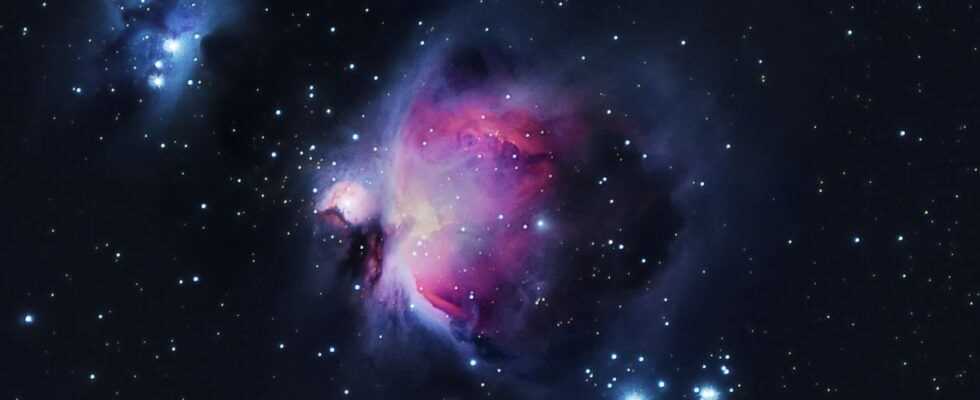4
An Ariane 5 rocket is preparing to launch from the Guyanese base at Kourou and transport the most promising space telescope ever developed into deep space. Here’s what you need to know.
The numbers are simply giddy: it’s as big as a tennis court, cost more than $ 10 billion, and won’t be up and running for six months. On December 25, at 1:20 p.m. Paris time, the James-Webb space telescope will be launched from Kourou (Guyana) by an Ariane 5 rocket. Designed by NASA in collaboration with the European (ESA) and Canadian space agencies, it will be launched from Kourou (Guyana). heir to the aging Hubble, launched in 1990 and still in office.
When did this project start?
The James-Webb Space Telescope project started 31 years ago with the hope of launching in 2007 after feasibility studies. Its construction has been significantly delayed and its budget has more than exploded. Its exit from the launch pad was in fact initially planned before 2011 and its cost, initially established at 3.5 billion dollars, has since almost tripled. The postponements have followed one another since 2011, especially between 2018 and 2021, and the last date, first announced for December 22, was again postponed by three days. Barring a last minute incident, James-Webb should finally take off.
What is the telescope made of?
He is a very beautiful 6.2 t baby. The James Webb Space Telescope (JWST) consists of a primary mirror 6.5 m in diameter, with the optical system at its center making it the most powerful space telescope ever built. This mirror is made up of 18 hexagonal beryllium mirrors covered with gold in order to better reflect the light captured from the far reaches of the universe. For comparison, Hubble’s mirror is only 2.4m in diameter.
Unlike the latter, which observes space primarily in the visible spectrum, the JWST specializes in wavelengths from orange to infrared, thus allowing it to scan very far in the universe, so much in the history of it. Against its enemy the heat, it is protected by a shield of 22 m wingspan (22 x 12 m) made of five layers of flexible metallic fabric, kapton, a material capable of withstanding extreme temperatures ranging from -269 to 400 ° vs. That’s good, the sunny side of James-Webb will be exposed to a temperature of 110 ° C, while the opposite side will have to withstand -235 ° C. The JWST houses four instruments with it: a NIRCam operating in the near infrared, the MIRI (mid infrared) spectro-imager, the NIRSpec multi-object (near infrared) spectrometer, and the NIRISS (near infrared) spectro-imager.
What is France’s involvement?
The development of the telescope is the result of collaboration between NASA and the European (ESA) and Canadian space agencies. The American agency provided the bulk of the funding ($ 7.9 billion), with ESA mainly providing one of the four on-board instruments, the MIRI (Mid-InfraRed Instrument). Even closer to us, France, notably via CNES, has developed one of the two parts of this instrument.
What are its missions?
Apart from the superb images that will feed our Instagram feeds, as for Hubble, the James-Webb is responsible for several missions of extreme scientific importance. He will search for the first stars and galaxies that appeared in the universe after the Big Bang from the tiny traces of infrared light, and will teach us more about the evolution of galaxies since the Dark Ages. It will make it possible to observe the formation of stars and planetary systems, and even to find new worlds potentially host to life thanks to the analysis of their physical and chemical characteristics.
Where is the telescope sent?
Once extirpated from terrestrial gravitation, the space observatory will begin a journey towards its destination, the Lagrange L2 point located 1.5 million kilometers from our planet. Contrary to what one might believe, this point is not located between the Earth and the Sun, but between the Earth and… the rest of the solar system.
When will it be operational?
If the telescope is properly launched today, December 25, without experiencing major problems, it will not become fully operational for science until six months later. Time for the JWST to perform several maneuvers and arrive at its destination, to fully deploy (178 mechanisms to activate for 50 small deployments of various components), and to be calibrated by the scientists. We will therefore have to wait at least until the second half of 2022 to hope to see the first images captured by James-Webb.
NASA will broadcast the launch live from its YouTube channel, accessible below.

